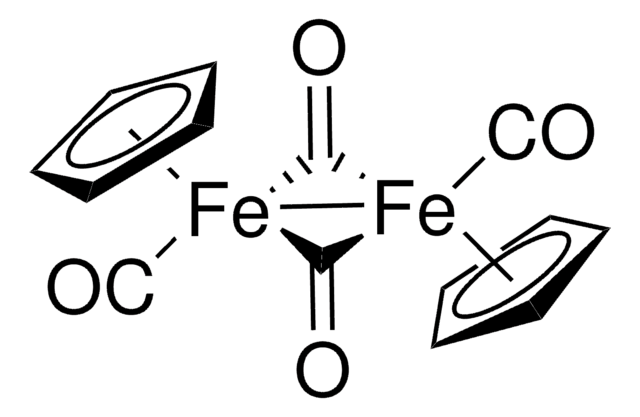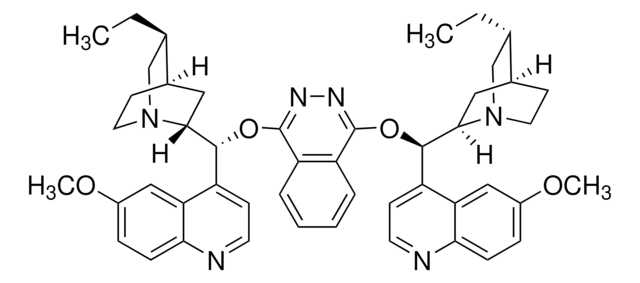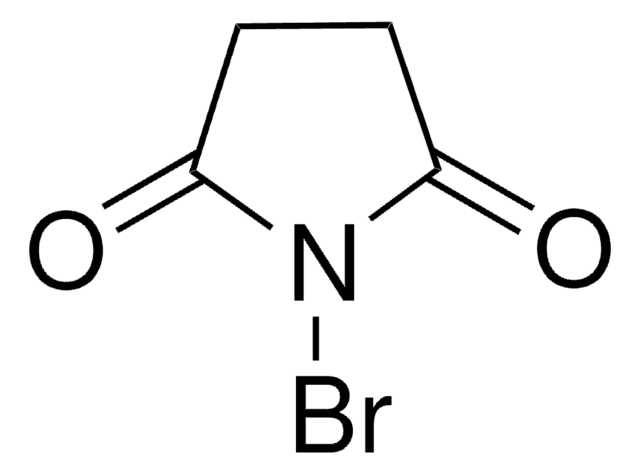Kluczowe dokumenty
481718
Iron(0) pentacarbonyl
>99.99% trace metals basis
Synonim(y):
Iron(0) carbonyl, Pentacarbonyliron(0)
About This Item
Polecane produkty
gęstość pary
6.74 (vs air)
Poziom jakości
ciśnienie pary
35 mmHg ( 25 °C)
40 mmHg ( 30.3 °C)
Próba
>99.99% trace metals basis
Formularz
liquid
temp. samozapłonu
122 °F
przydatność reakcji
core: iron
reagent type: catalyst
charakterystyka ekologicznej alternatywy
Catalysis
Learn more about the Principles of Green Chemistry.
sustainability
Greener Alternative Product
współczynnik refrakcji
n20/D 1.5196 (lit.)
bp
103 °C (lit.)
mp
−20 °C (lit.)
gęstość
1.49 g/mL at 25 °C (lit.)
kategoria ekologicznej alternatywy
, Aligned
temp. przechowywania
2-8°C
ciąg SMILES
[Fe].[C-]#[O+].[C-]#[O+].[C-]#[O+].[C-]#[O+].[C-]#[O+]
InChI
1S/5CO.Fe/c5*1-2;
Klucz InChI
FYOFOKCECDGJBF-UHFFFAOYSA-N
Szukasz podobnych produktów? Odwiedź Przewodnik dotyczący porównywania produktów
Opis ogólny
Zastosowanie
- To fabricate Fe-based anode materials for high-performance aqueous secondary Ni−Fe batteries. It helps to achieve good safety, high power density, long term-life cycle, and high energy density.
- As a precursor to synthesize highly stable, colloidal magnetic iron nanoparticles with narrow size distribution. These nanoparticles are potential candidates for MRI contrasting agents and magnetically separable catalysts.
- To synthesize zero valent sustainable iron nanocatalysts for reduction reactions.
- Addition reactions
- Decomposition via photolysis
- Preparation of magnetic Fe onion-like fullerene micrometer-sized particles of narrow size distribution via thermal decomposition
- Preparation of a heptanuclear iron carbonyl cluster used in catalytic hydrosilane reduction of carboxamides
- Precursor for preparation of Fe nanoparticles for photocatalytic hydrogen evolution under highly basic conditions
Hasło ostrzegawcze
Danger
Zwroty wskazujące rodzaj zagrożenia
Zwroty wskazujące środki ostrożności
Klasyfikacja zagrożeń
Acute Tox. 1 Inhalation - Acute Tox. 2 Oral - Acute Tox. 3 Dermal - Flam. Liq. 2
Kod klasy składowania
3 - Flammable liquids
Klasa zagrożenia wodnego (WGK)
WGK 1
Temperatura zapłonu (°F)
5.0 °F - closed cup
Temperatura zapłonu (°C)
-15 °C - closed cup
Środki ochrony indywidualnej
Eyeshields, Faceshields, Gloves, type ABEK (EN14387) respirator filter
Wybierz jedną z najnowszych wersji:
Masz już ten produkt?
Dokumenty związane z niedawno zakupionymi produktami zostały zamieszczone w Bibliotece dokumentów.
Klienci oglądali również te produkty
Produkty
Solwotermalna synteza nanocząstek: zastosowania od nanoobwodów i obwodów nanooptycznych do nanomagnetyki i biotechnologii.
Solvothermal synthesis is a method for preparing a variety of materials such as metals, semiconductors, ceramics, and polymers.
Spin-based electronic (spintronic) devices offer significant improvement to the limits of conventional charge-based memory and logic devices which suffer from high power usage, leakage current, performance saturation, and device complexity.
Nasz zespół naukowców ma doświadczenie we wszystkich obszarach badań, w tym w naukach przyrodniczych, materiałoznawstwie, syntezie chemicznej, chromatografii, analityce i wielu innych dziedzinach.
Skontaktuj się z zespołem ds. pomocy technicznej











